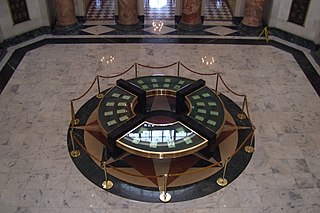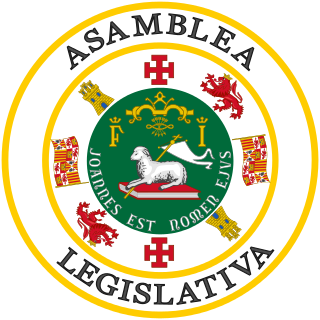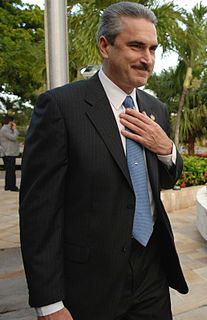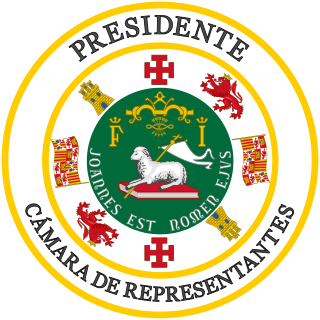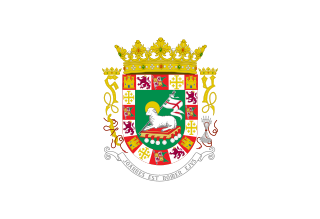
The government of Puerto Rico is a republican form of government with separation of powers, subject to the jurisdiction and sovereignty of the United States. Article I of the Constitution of Puerto Rico defines the government and its political power and authority pursuant to U.S. Pub.L. 82–447. Said law mandated the establishment of a local constitution due to Puerto Rico's political status as a commonwealth of the United States. Ultimately, the powers of the government of Puerto Rico are all delegated by Congress and lack full protection under the U.S. Constitution. Because of this, the head of state of Puerto Rico is the President of the United States.

The Parliament of Canada is the federal legislature of Canada, seated at Parliament Hill in Ottawa, the national capital. The body consists of the Canadian monarch, represented by a viceroy, the Governor General; an upper house, the Senate; and a lower house, the House of Commons. Each element has its own officers and organization. By constitutional convention, the House of Commons is dominant, with the Senate and monarch rarely opposing its will. The Senate reviews legislation from a less partisan standpoint and the monarch or viceroy provides royal assent to make bills into law.

The federal government of the United States is the national government of the United States, a federal republic in North America, composed of 50 states, a federal district, five major self-governing territories and several island possessions. The federal government is composed of three distinct branches: legislative, executive and judicial, whose powers are vested by the U.S. Constitution in the Congress, the president and the federal courts, respectively. The powers and duties of these branches are further defined by acts of Congress, including the creation of executive departments and courts inferior to the Supreme Court.

The Congress of the Republic of Colombia is the name given to Colombia's bicameral national legislature.
An entrenched clause or entrenchment clause of a basic law or constitution is a provision that makes certain amendments either more difficult or impossible to pass, making such amendments inadmissible. Overriding an entrenched clause may require a supermajority, a referendum, or the consent of the minority party.

The House of Representatives of Puerto Rico is the lower house of the Legislative Assembly of Puerto Rico, the bicameral territorial legislature of Puerto Rico. The House, together with the Senate, control the legislative branch of the government of Puerto Rico.

The Supreme Court of Puerto Rico —Spanish: Tribunal Supremo de Puerto Rico (TSPR)— is the highest court of Puerto Rico, having judicial authority to interpret and decide questions of Puerto Rican law. The Court is analogous to one of the state supreme courts of the states of the United States; being the Supreme Court of Puerto Rico the highest state court and the court of last resort in Puerto Rico. Article V of the Constitution of Puerto Rico vests the judicial power in the Supreme Court—which by its nature forms the judicial branch of the government of Puerto Rico. The Supreme Court holds its sessions in San Juan.

The Italian Parliament is the national parliament of the Italian Republic. It is the representative body of Italian citizens and is the successor to the Parliament of the Kingdom of Sardinia (1848–1861) and the Parliament of the Kingdom of Italy (1861–1946). It is a bicameral legislature with 945 elected members and a small number of unelected members (parlamentari). The Italian Parliament is composed of the Chamber of Deputies and Senate of the Republic. The two houses are independent from one another and never meet jointly except under circumstances specified by the Constitution of Italy.

Elections in Puerto Rico are guaranteed by Article VI of the Constitution of Puerto Rico and the Electoral Code of Puerto Rico for the 21st Century Act. All processes are overseen and managed in whole by the Puerto Rico State Elections Commission; an autonomous agency of the executive branch of the government of Puerto Rico.
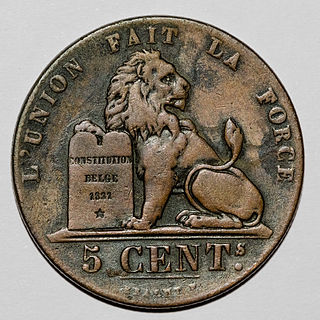
The Constitution of Belgium dates back to 1831. Since then Belgium has been a parliamentary monarchy that applies the principles of ministerial responsibility for the government policy and the Trias Politica. The Constitution established Belgium as a centralised unitary state. However, since 1970, through successive state reforms, Belgium has gradually evolved into a federal state.

In the United States, a state is a constituent political entity, of which there are currently 50. Bound together in a political union, each state holds governmental jurisdiction over a separate and defined geographic territory and shares its sovereignty with the federal government. Due to this shared sovereignty, Americans are citizens both of the federal republic and of the state in which they reside. State citizenship and residency are flexible, and no government approval is required to move between states, except for persons restricted by certain types of court orders. Four states use the term commonwealth rather than state in their full official names. The term does not describe or provide for any specific political status or legal relationship when used by a state.
The Council of Secretaries of Puerto Rico is the group composed by the heads of the executive departments of the government of Puerto Rico. The Council is charged with leading the different sectors of public administration within the government and does not constitute an agency by itself.
Article Four of the Constitution of Puerto Rico describes the powers, structure, functions, responsibilities, and legal scope of the Governor of Puerto Rico, the executive branch of the government of Puerto Rico. The article establishes the term length of the governor and the requirements to hold such post, as well as establishing the governor as commander-in-chief of the militia, namely the Puerto Rico National Guard. It also establishes that the governor must present a State of the State address to the Legislative Assembly each year, as well as a report on the Budget of the Government of Puerto Rico.
The Chief Justice of the Supreme Court of Puerto Rico is the presiding officer of the Supreme Court of Puerto Rico. The post of Chief Justice was created by Article V of the Constitution of Puerto Rico. The constitution also established in several articles that the Chief Justice must:
Article Five of the Constitution of Puerto Rico describes the powers, structure, functions, responsibilities, and legal scope of the Supreme Court of Puerto Rico, the judicial branch of the government of Puerto Rico. The article also establishes that the Supreme Court must be the court of last resort, and that it must be composed by a Chief Justice and several Associate Justices. It also establishes that judges must be appointed by the Governor of Puerto Rico with the advice and consent from the Senate of Puerto Rico.
